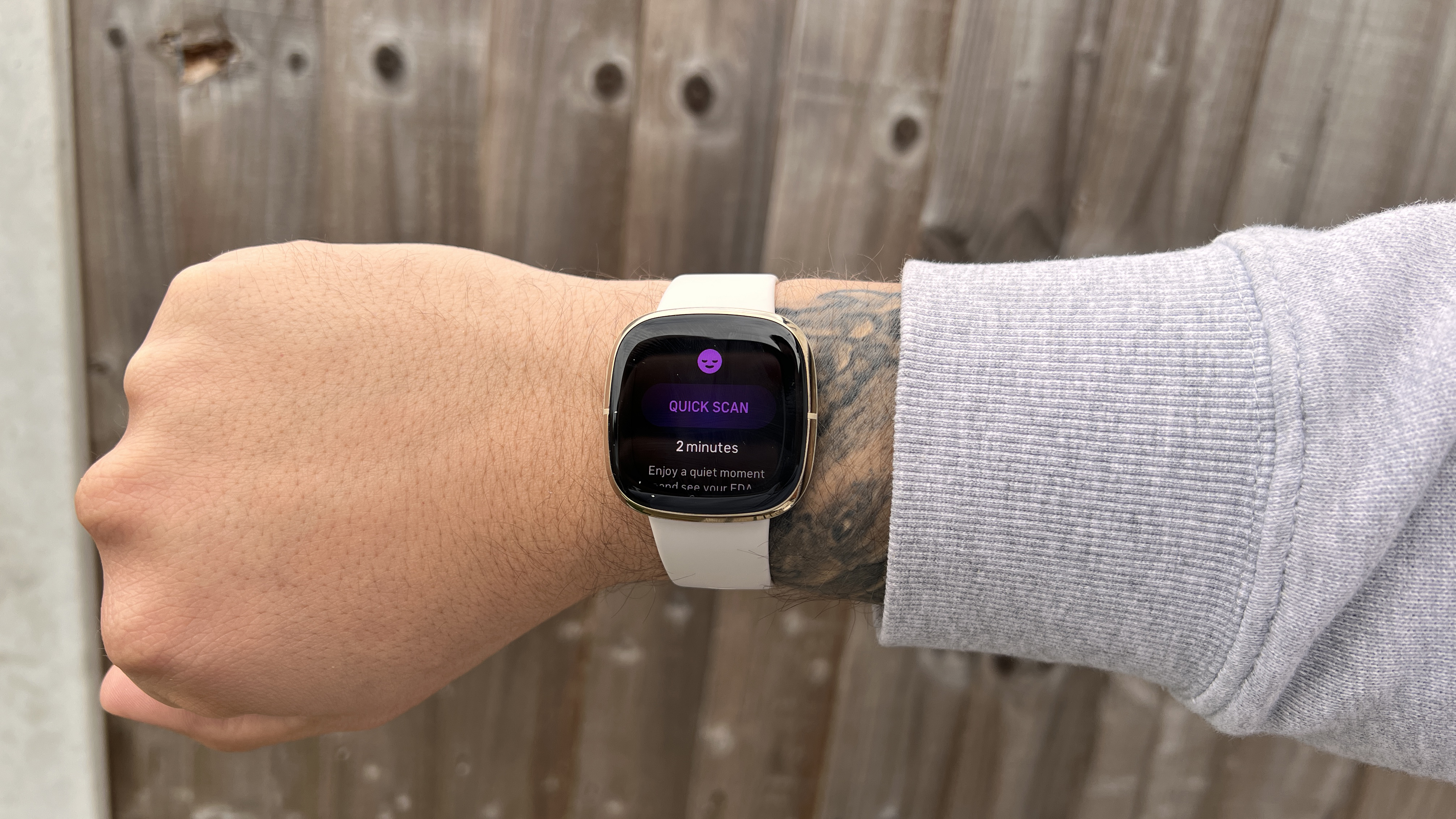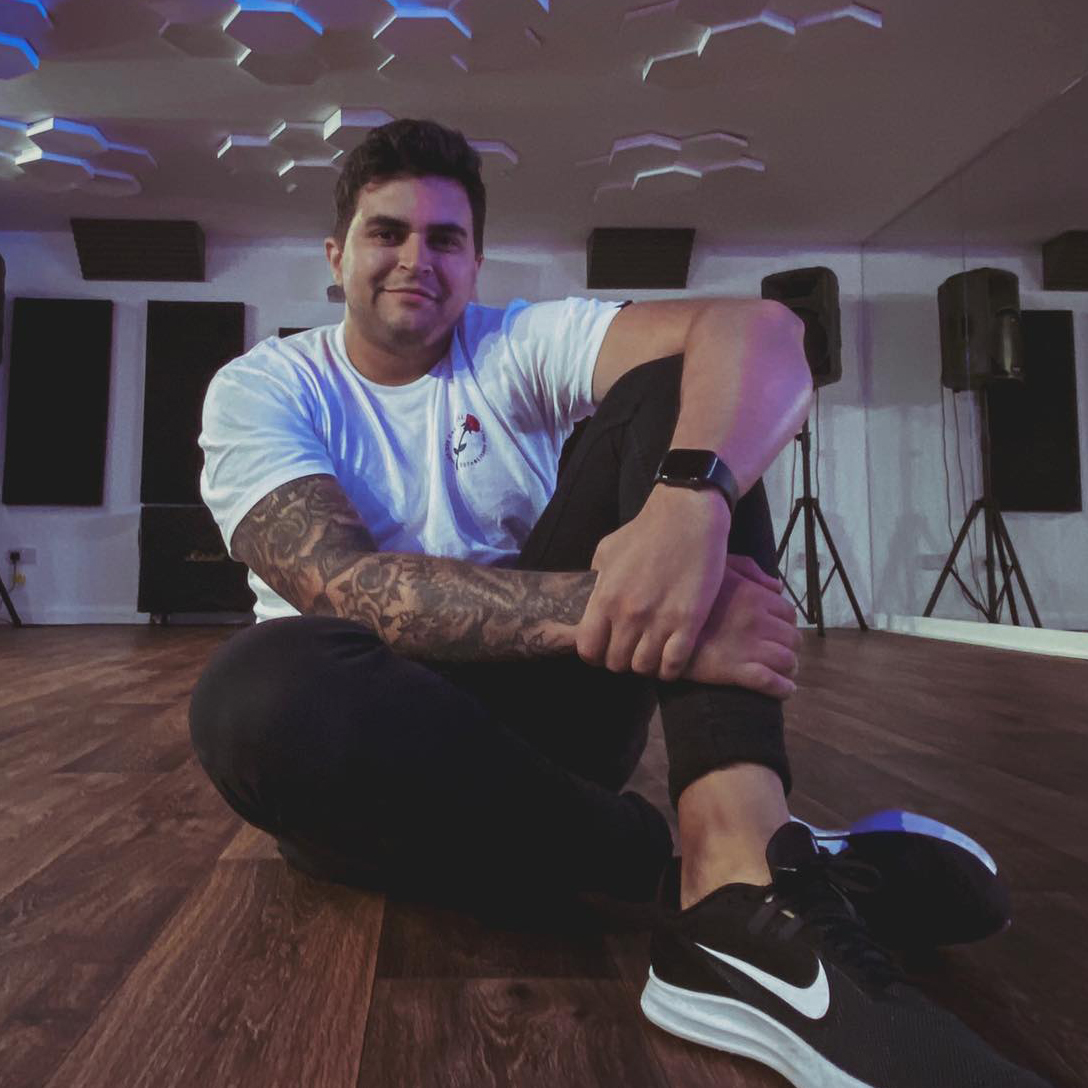Live Science Verdict
Fitbit’s most expensive smartwatch is also its finest, but only if you’re likely to enjoy the extra sensors. If not, the Versa 3 is a cheaper alternative.
Pros
- +
Nice, understated design.
- +
Bright display
- +
Stress Score could be really helpful
Cons
- -
Pricier than any other Fitbit
- -
No offline audio unless you’re on Deezer or Pandora
Why you can trust Live Science
The Fitbit Sense is the company’s latest high-end product, coming in at a higher price than anything in its Versa lineup. Given that the Fitbit empire is pretty much built upon the success of inexpensive trackers, this £219/$229.95 model feels like a play for the Apple Watch market.
And yet, the Fitbit Sense is really its own thing. It takes much of what’s found on the Versa (a rounded square design, 1.58-inch display) and repurposes it slightly, with a larger number of sensors. Both the Versa 3 and the Sense can track your heart rate, temperature, blood oxygen levels, and more, but you’ll need a Fitbit Sense to carry out a portable ECG, and it also offers high and low heart-rate alerts.
Software: Fitbit OS
Compatibility: iOS and Android phones
Battery life: Around six days
Memory size: 4GB
Display type and screen size: 1.58” OLED
GPS: Yes
Water resistance: Up to 50 metres
Heart rate tracker: Yes
Sleep tracker: Yes
Music: Offline audio only available via Deezer and Pandora
The big push, though, isn’t solely for your physical health at all – it’s for your mental health. The Fitbit Sense offers the EDA Scan, a way to scan your stress levels through – get this – the sweatiness of your hand. That’s a very simplified way of putting it, but by placing your hand over the watch, it’ll tell you how your body has reacted to any current stresses you may be dealing with. It’s been seen in the Fitbit Charge 5, but at the time of writing, is the key differentiator between the Sense and the Versa 3.
All of this is combined with other metrics to assign a Stress Score, blurring the lines between physical and mental wellbeing tracking to spot physiological tells.
On top of that, the watch is comfortable and lasts for a while, hitting around five and a half days in our testing, making the Fitbit Sense the best Fitbit you can buy right now. We actually rate it as one of the best fitness trackers overall, thanks to its many features and easy-to-operate design – and we rank it among one of the best Fitbits you can buy right now.
Price and release date
- Launched September 2020
- Usually discounted
The Fitbit Sense was launched in September 2020. It retails for £299.99 in the UK, and $299.95 in the US, but can regularly be found discounted – you shouldn’t really ever pay more than £219/ $229.95 for the model. It comes with a six-month free trial of Fitbit Premium, which we’ll explain shortly.
Design and display
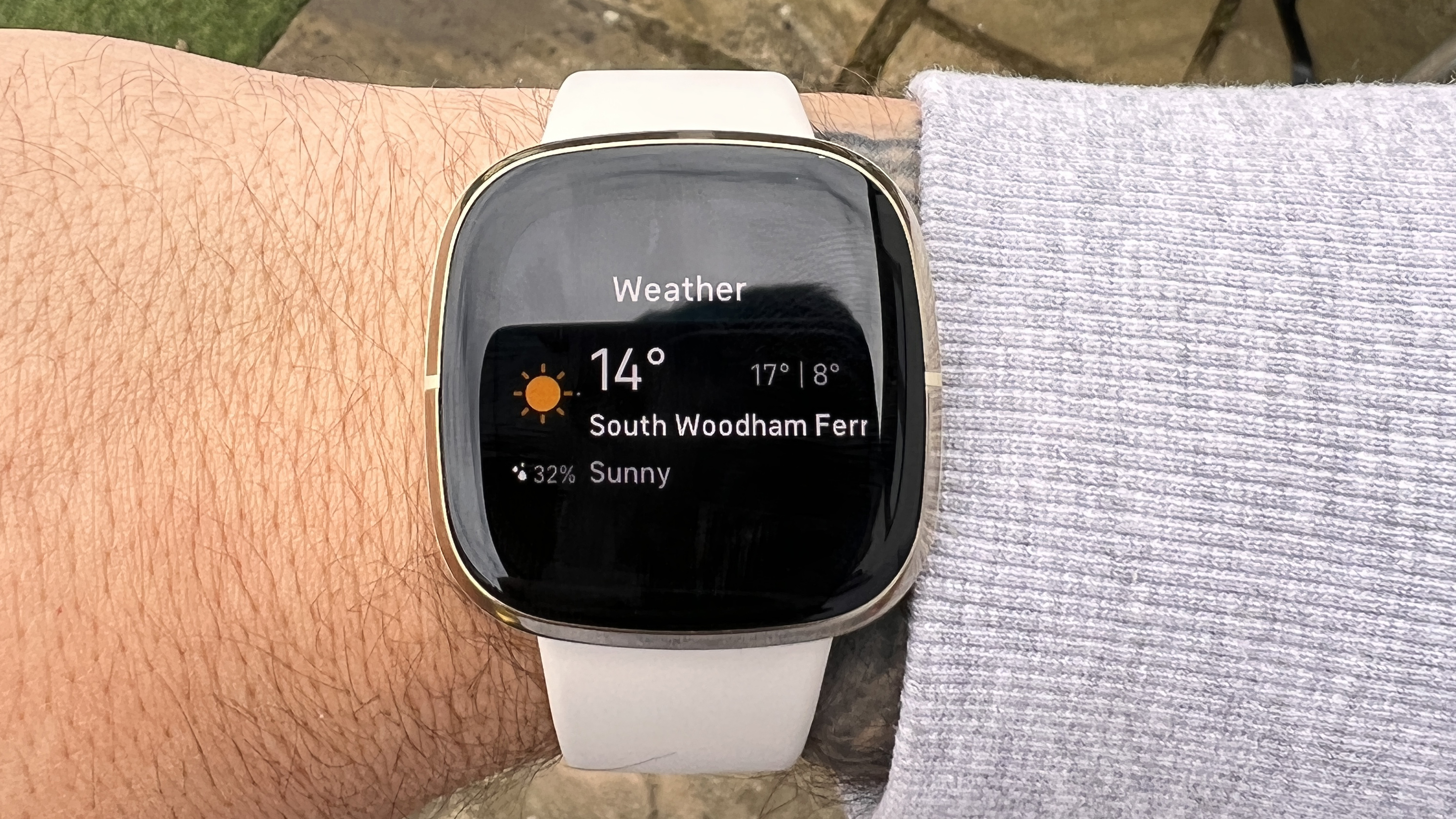
- Chunky AMOLED display
- Comfortable, silicone strap
As we alluded to earlier, the Fitbit Sense is very similar to the Fitbit Versa 3. In fact, they’re near-identical, both with rounded square designs.
The case is made of stainless steel, but you won’t find any physical buttons anywhere. Instead, on the left side, there’s a touch-sensitive button that will bring up Alexa by default. A double-tap will give access to a quartet of shortcuts.
The display is 1.58-inches diagonally, and that’s plenty large enough to show your apps, notifications, and everything else. If you’re coming from the likes of a Fitbit Charge 5, it’ll feel monolithic at first, but it never feels too large to feel comfortable. It also sports a Gorilla Glass cover, meaning it’s tougher than you’d expect for such a slimline design, too.
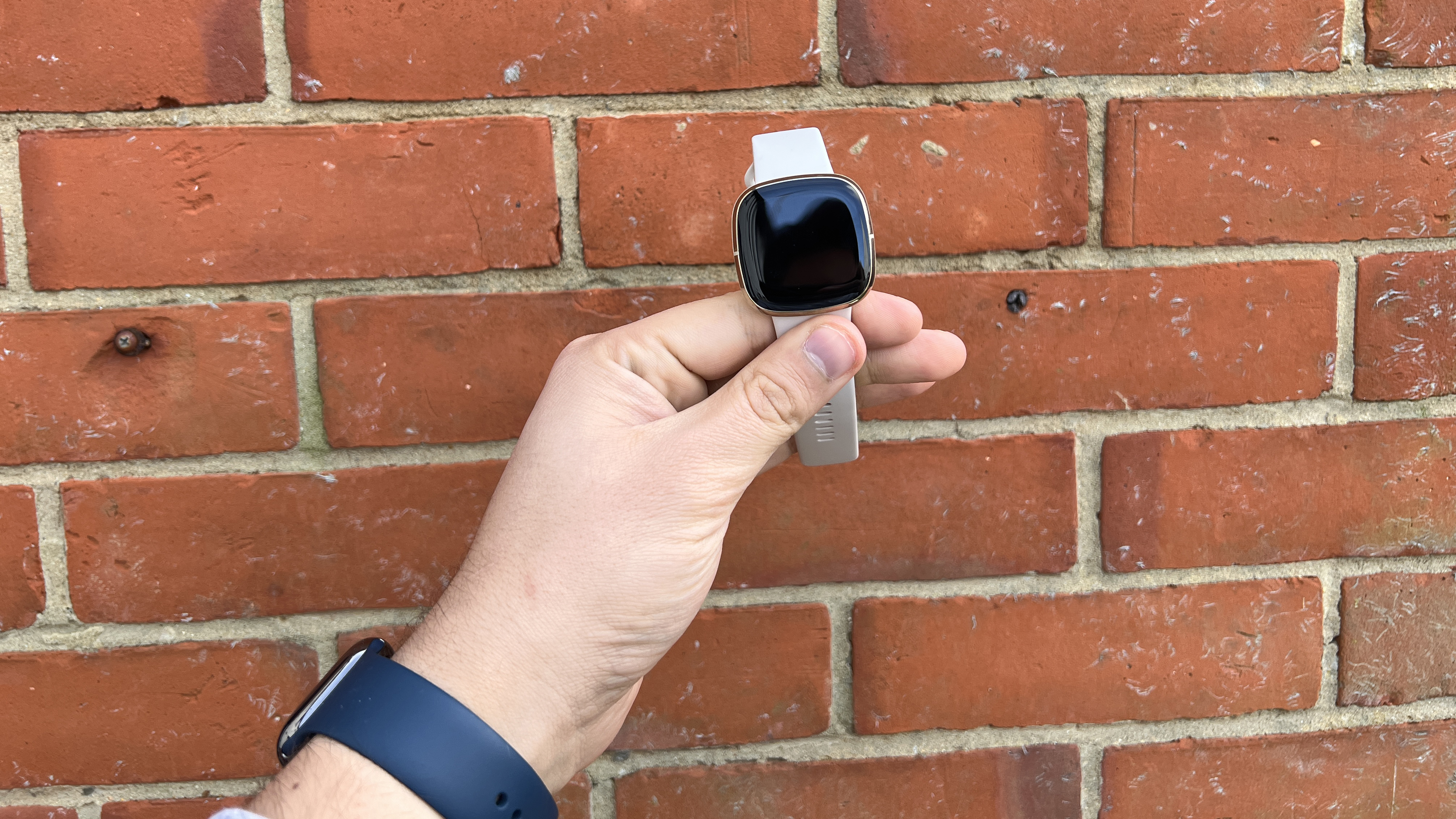
The Fitbit Sense’s display is also AMOLED. That means text and icons stand out better on its black background, but also means it’s much more easy to read in direct sunlight.
When it comes to the band, the Fitbit Sense’s “Infinity band” is more closely compared to the Apple Watch “Sport band”, with a silicone texture. Unlike that strap, though, there are no metallic moving pieces – it folds over on itself neatly, and it’s comfortable enough to feel like you’re not really wearing anything on your wrist at all. As with most smartwatches, there are two sizes included, too, and you can swap with third-party or alternative options from Fitbit with ease.
Fitbit Sense offers customizable watch faces that you can switch between with a few taps, meaning you can set them for the occasion or to match your mood.
The Fitbit Sense is available in Soft Gold (as seen in our review unit, image below), Graphite Stainless Steel (black), and Silver Stainless Steel.
Features
- ECG assessment offers heart-health insights
- EDA stress scan
- Tracks steps, distance and calorie count
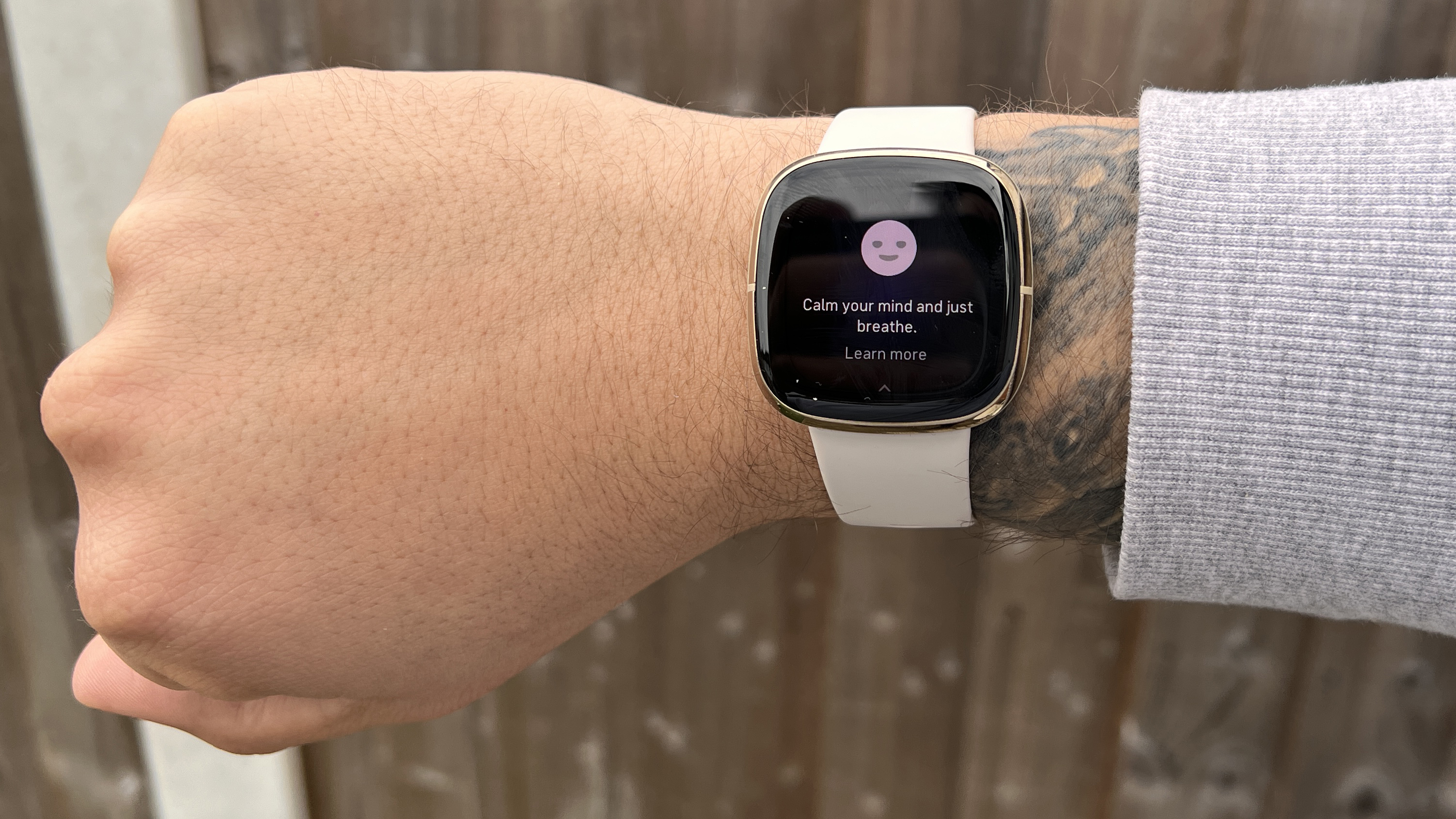
Despite the Fitbit Sense’s svelte form-factor, it’s packing plenty of sensors and gizmos under the hood. As you’d expect from a modern smartwatch, Fitbit Pay lets you pay without needing your wallet, while all of the data is relayed to your phone via the Fitbit app for iOS or Android. You’ll also find both Alexa and Google Assistant available as options.
At its most basic level, it’ll track your steps, distance walked, and calorie count by default, giving you an “at a glance” look at your goals throughout the day, while also tracking sleep.
Unlike the Apple Watch Series 7, you won’t need to charge it overnight, so you can take advantage of sleep-tracking insights. That’s thanks to its six-day battery life, although you’ll see less of a return on a single charge if you like to prod the device regularly and run ECGs and more.
It’s also waterproof up to a depth of 50 meters, and offers blood oxygen measurements. So far, so Fitbit, but the Sense can now offer an ECG to assess atrial fibrillation, which means you can get high and low heart rate notifications.
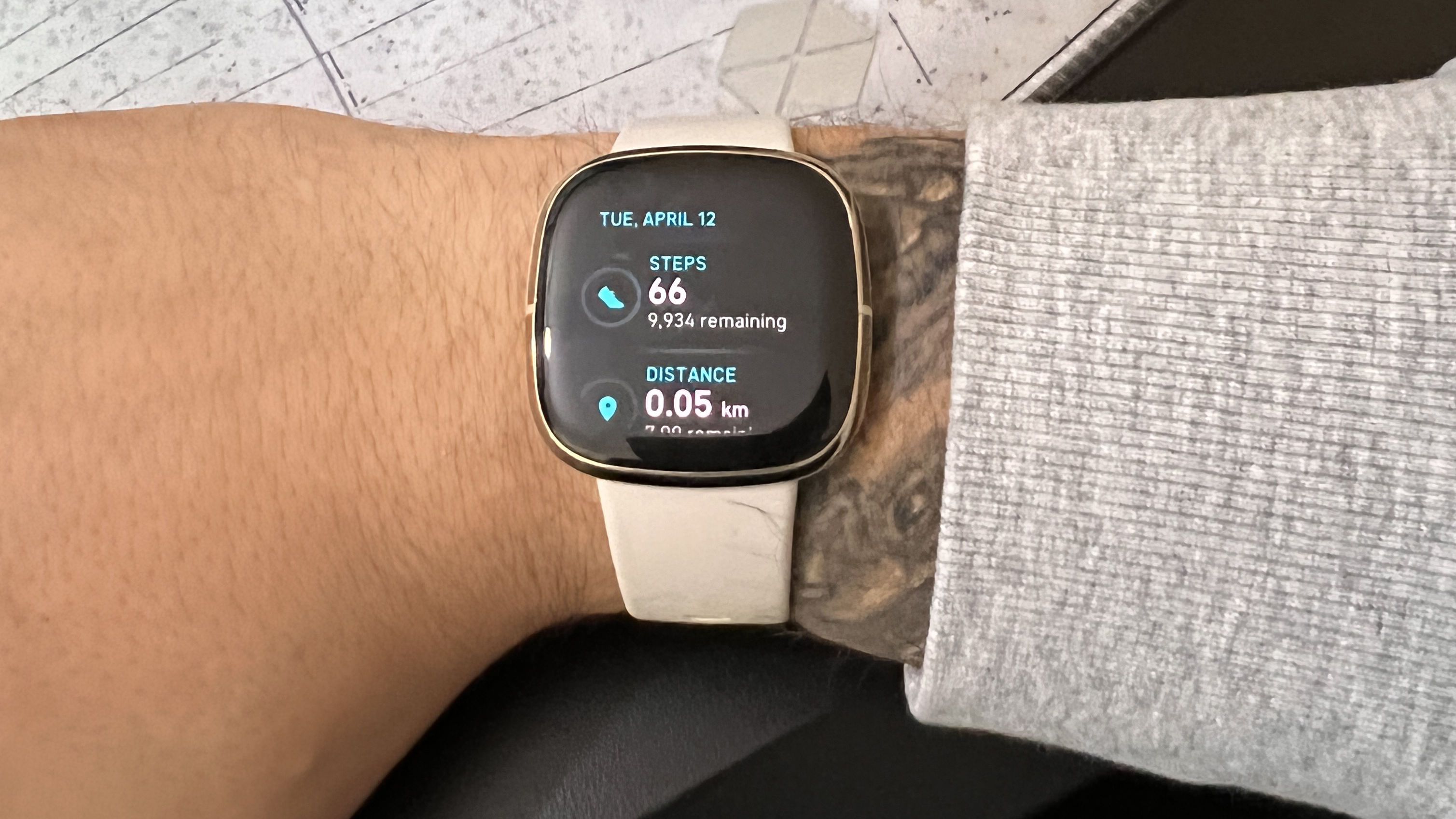
As we mentioned earlier, the big boon of the Sense is the EDA scan which helps you make a note of your current stress levels. This ties in with other data points, including a quick questionnaire and continual tracking of your body temperature and heart rate to build a picture of your stresses and assigns a Stress Score.
It’s not the only Fitbit to do this, but it is the key distinction between the feature sets of the Versa 3 and the Sense, so it’s worth mentioning – especially since it’s expected to bridge the price gap between the two. It’s tied to Mindfulness, and so the Sense will suggest meditation options or mindfulness exercises if your stress is high.
Using a smartwatch won’t cut stress from your life, but it’s a handy way to collate the data and allow you to draw your own conclusions for what amplifies stress.
Speaking of exercises, the Sense offers plenty right out of the box, but you’ll find plenty more as part of the bundled six months of Fitbit Premium.
Not only does this add additional data, but it offers features like Guided Programs that roll plenty of metrics into one. Think of it as a small personal trainer that lives on your wrist, giving advice to help maximise your sleep, exercise, and diet metrics.
It’ll also calculate a Daily Readiness score based on that data, helping answer the immortal question of “do I rest, or is it time for a workout?” After an initial period where it learns your body’s rhythms (and your schedule), the idea is to help maximize the hours in your day (and those that you sleep) to ensure you’re ready for anything.
While the Sense is great without Fitbit Premium, it’s still worth considering as an option if you’re serious about fitness.
Performance
- Good GPS performance
- Solid battery life (max six days)
- Accurate heart rate tracking
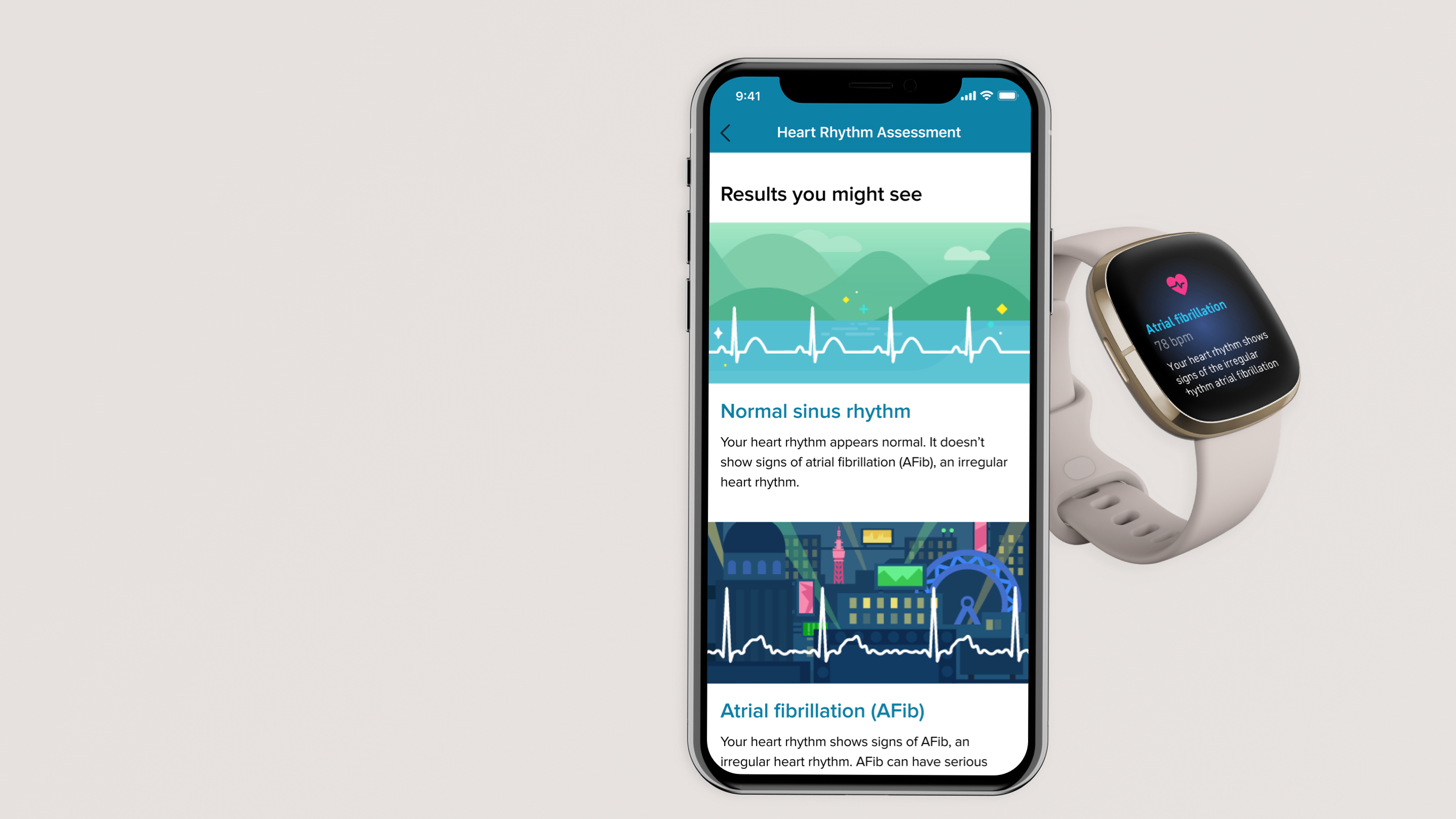
While the Fitbit Sense is never going to be as precise as a dedicated GPS watch, we tested it alongside both an Apple Watch Series 7 and the Fitbit Versa 3 and are pleased to say all three link up nicely.
If you’re looking to shave off some time on your favorite 5km route, it’ll work just fine, and the workout display on the watch itself is clear and easy to read whether you’re running, cycling, or anything else.
When it comes to heart-rate tracking, we found both standard tracking and the ECG to match up to the Apple Watch Series 7 in terms of accuracy.
Sadly, the Sense falls into the same pitfall as the Fitbit Charge 5: No offline music playback from services other than Deezer and Pandora. If you prefer music or podcasts on your workouts, the best you can do is to take your phone with you and stream music from there.
That’s a big miss for a smartwatch that offers almost everything else, and at this price point it feels conspicuous by its absence. You can, however, use your Fitbit Sense to control audio playback from your iPhone or Android device, so at least if your phone is in your pocket you won’t be reaching for it constantly. Still, if you’re using Deezer or Pandora, you’ll have more options.
As we’ve touched upon a couple of times in this review, the Fitbit Sense’s battery life is excellent. While Fitbit says it offers a six-day battery life, we got it to croak just after five days – largely through testing, using its sensors, and tracking sleep. Considering the Apple Watch costs more and won’t hit half of that, it’s an impressive feat even with that increased usage.
Verdict
While we’d have loved to have stored a playlist or two on it, the Fitbit Sense is a great smart watch. Its battery is long-lasting, it’s full of great features, and makes a real effort to help provide users with the data needed to improve their mental health – be that due to stresses at work or at home.
The only question is just how many of those additional features you’re likely to use. If you’re not keen on the EDA scan, the Versa 3 is a fair bit cheaper, and matches the Sense pound for pound in almost every way.
If this isn’t for you
As noted above, the EDA aside, the Sense is very similar to the Versa 3. That’s no bad thing, though. If you are keen on the stress-busting features, but less so on the price, the Fitbit Charge 5 is also great, but does lose the larger display in favor of a slimline one.
If you’re an iOS user, you’re not too far from the Apple Watch Series 7, but you can also get the excellent Apple Watch SE for less – but this comes with its own drawbacks, noticeably a shorter battery life.
Lloyd Coombes freelance tech and fitness writer for Live Science. He's an expert in all things Apple as well as in computer and gaming tech, with previous works published on TechRadar, Tom's Guide, Live Science and more. You'll find him regularly testing the latest MacBook or iPhone, but he spends most of his time writing about video games as Gaming Editor for the Daily Star. He also covers board games and virtual reality, just to round out the nerdy pursuits.
